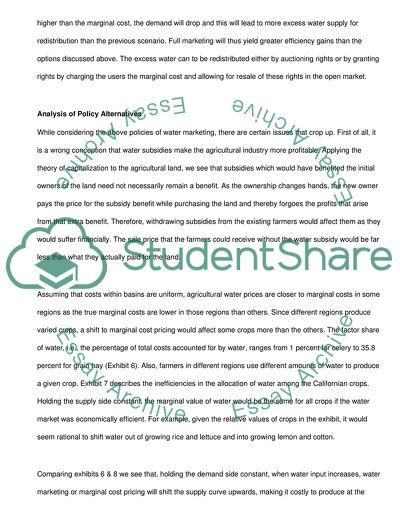Cite this document
(“California Water Pricing Essay Example | Topics and Well Written Essays - 750 words”, n.d.)
California Water Pricing Essay Example | Topics and Well Written Essays - 750 words. Retrieved from https://studentshare.org/marketing/1543529-case-study-california-water-pricing-introductory-microeconomics
California Water Pricing Essay Example | Topics and Well Written Essays - 750 words. Retrieved from https://studentshare.org/marketing/1543529-case-study-california-water-pricing-introductory-microeconomics
(California Water Pricing Essay Example | Topics and Well Written Essays - 750 Words)
California Water Pricing Essay Example | Topics and Well Written Essays - 750 Words. https://studentshare.org/marketing/1543529-case-study-california-water-pricing-introductory-microeconomics.
California Water Pricing Essay Example | Topics and Well Written Essays - 750 Words. https://studentshare.org/marketing/1543529-case-study-california-water-pricing-introductory-microeconomics.
“California Water Pricing Essay Example | Topics and Well Written Essays - 750 Words”, n.d. https://studentshare.org/marketing/1543529-case-study-california-water-pricing-introductory-microeconomics.


